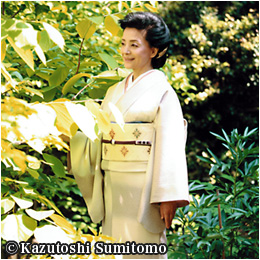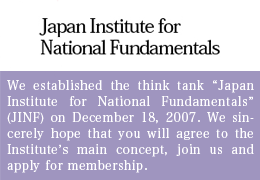NEEDED: GOVERNMENT LEADERSHIP IN IMPLEMENTING SOLID NUCLEAR POWER POLICY
Despite universally recognized excellence in many technological fields, one can not help feeling certain misgivings about Japan when it comes to the credibility of its overall industrial strategy. Nuclear energy is no exception. Japan boasts the world’s leading nuclear technology in the manufacture of reactor pressure vessels, for example, which are regarded as the single most important component of a nuclear reactor. In connection with the March 11, 2011 nuclear accident in Fukushima, we tend to focus on the hydrogen explosion that took place in Reactor No. 1, but Reactor No. 2 remarkably withstood the gigantic earthquake and tsunami. The crisis management demonstrated at the time by a team of 400 employees headed by plant manager Naohiro Masuda was praised by Harvard Business Review as truly world-class.
Even as Japan’s nuclear power industry struggles to get back on its feet again, there are a number of shining examples of “world-class” accomplishments. However, being a lap behind its counterparts in the international community, the industry is having a hard time catching up.
Why is Japan behind? Where do the problems lie? These matters were taken up recently at a monthly study meeting of the Japan Institute of National Fundamentals, a privately-financed Tokyo think tank I head. Three speakers were invited—former Education Minister Hakubun Shimomura, who serves as special advisor to Prime Minister Shinzo Abe; Professor Minoru Suzuki of the Particle Radiation Oncology Research Center, Kyoto University; and Professor Tadashi Narabayashi of the Faculty of Engineering at the Graduate School of Engineering, Hokkaido University.
To sum up our conclusions, irrational restrictive measures enforced by the Nuclear Regulatory Agency (NRA) appear to be responsible for the across-the-board stagnation affecting the nation’s atomic energy field today.
Last December, the Paris Agreement was adopted at the 21st Conference on the Parties to the UNFCCC (United Nations Framework Convention on Climate Change), stringently calling on members of the international community to reduce greenhouse gases to near net zero by the end of the century. Japan pledged to achieve, by 2030, a 26% reduction of CO2 from 2013. But is this goal achievable with the approach Japan is currently taking?
The rest of the world is taking steps to break away from thermal power generation with coal to realize a drastic reduction of CO2 emission. The United Kingdom has decided on a total abolition of coal usage by 2025, while the Netherlands legislated a gradual closure of thermal power stations. The US and China—the world’s two biggest CO2 emitter countries—have also taken steps to move beyond coal.
Nuclear Power Regarded as Dangerous in Japan
Japan is a different story, however. Thermal power generation in 2013 accounted for 30% of all electrical sources in Japan—up 5% from before the Great East Japan Earthquake. Japanese utilities are planning on constructing a total of 43 thermal power plants by 2030, each with a generating capacity of 20 million kilowatts of electricity.
This is because a restart of the nation’s 50-odd nuclear reactors—all of which were shut down immediately after the 3/11 disaster—has since been prevented due to unduly rigid regulation by the NRA. Shimomura voiced grave concern about the effectiveness of efforts to drastically reduce CO2 emission by turning to renewable energy and energy-saving measures alone.
Shimomura stresses the importance of Japan using the valuable lessons it learned from the Fukushima disaster in demonstrating a model case of safety for all aspects of nuclear power generation. This includes designing, construction, operation, and decommissioning of nuclear reactors; sealing of radioactivity; environmental protection; and waste disposal. By providing this model of safety, Japan will be able to make a significant contribution to the world as it becomes increasingly dependent on nuclear power generation.
Explaining that he is only expressing his personal opinion, Shimomura remarked:
“Experts have warned that the earth’s temperature will rise by more than two degrees Celsius by the end of the century. With a commitment to reduction of CO2 emission and prevention of atmospheric warming in mind, the international community is seeking a further promotion of nuclear power generation. In order to achieve our goal of nuclear power generation for some 20% of the total energy required in Japan, we need to restart approximately 30 reactors. When it comes to nuclear power generation, the world regards fast-breeder reactors as an indispensable element of the nuclear fuel cycle.”
Shimomura believes fast-breeder reactors must also be a key part of Japan’s nuclear strategy.
Last November, the NRA disqualified the Japan Atomic Energy Agency (JAEA) as manager of the Monju fast-breeder reactor, issuing a harsh warning that it will be decommissioned unless a replacement body is found within the next six months.
While Monju is regarded as “dangerous” in Japan, the evolution of fast―breeder reactors has been remarkable outside Japan. Explained Professor Narabayashi:
“At present, China is generating 20,000 kilowatts via fast-breeder reactors, while Russia and India are generating 880,000 kilowatts and 500,000 kilowatts, respectively. Meanwhile, France is slated to generate 600,000 kilowatts by 2025. We must take note of the fact that China and India, which combined account for about one third the world’s population, are already utilizing fast-breeder reactors.”
What is behind this drive toward fast-breeder reactors elsewhere in the world, while Monju has been treated as a problematical “backward pupil” ever since its inception? Narabayashi had this to say:
“The French high fast-breeder Superphoenix caused 32 sodium leakages over 30 years. Following each accident, Superphoenix moved steadily toward commercial power generation by pinpointing the causes of the trouble and improving itself. With Monju, there has been just one sodium leakage which caused a fire inside the reactor. With the JNEA blamed for concealing the accident, its operation of Monju has been suspended over the past 20 years.”
There certainly is no excuse for putting a lid on any information pertaining to an accident. However, is it justifiable to suspend the reactor’s operation for 20 years? In the first place, Monju is a prototype reactor operated to check if it functions as designed. Should it develop problems, the causes must be strictly determined so that the device itself can further be improved. It certainly must be asked why no further attempts at operation have been permitted because of this single accident.
“Nuclear Energy Amateurs”
Professor Takashi Okamoto of the Graduate School of Tokyo University calls the five members of the NRA “nuclear energy amateurs.” He describes the recommendations they made for the Monju operator as “criticism of minor maintenance errors that had practically nothing to do with the very safety of the fast-breeder reactor…It is like saying a stain found on the backside of a rearview mirror of your car is unpardonable.” In other words, what is important for a car’s safety fundamentally is that its engine and brakes function properly; a smear on the backside of a rearview mirror has absolutely nothing to do with driving safely.
Shimomura made these other important points regarding the advantages of fast-breeder reactors:
“Radioactivity from spent nuclear fuel is known to take 100,000 years before it drops naturally to the same level as natural uranium not hazardous to human health. If burned inside a fast-breeder reactor, this period will be reduced to 300 years, while the spent fuel will shrink to one seventh its original volume. A fast-breeder reactor can keep generating energy for 2,500 years without refueling. It is because of these marvelous merits that the international community is pursuing utilization of fast breeder-reactors in earnest.”
Noting that the government will decide on the future of Monju by this coming May, Shimomura added:
“Although the NRA has disqualified the JNEA, there are no other organizations in Japan that can reliably be entrusted with the operation of Monju. That being the case, one scenario is for the government to take over Monju and conduct further research with France.”
Shimomura also made important remarks about the nuclear fuel cycle, whose completion requires two elements: an operable fast-breeder reactor and a solid reprocessing plant. Construction of the nation’s only reprocessing plant started at Rokkasho Village in Aomori Prefecture in April 1993; performance tests ended in 2013 after many twists and turns, but the plant has yet to be completed.
“The completion date of the reprocessing plant in Aomori has so far been postponed 23 times,” continued Shimomura. “But we are now hoping to finally put it into operation by 2018. It is crucial for the government to have spent fuel from various nuclear power plants reprocessed at the plant without delay, while dispelling any suspicion on the part of the international community about our intention to utilize nuclear power for military purposes.”
Japan’s nuclear power policies have hitherto been unclear. Listening to Shimomura’s clear-cut explanations, I could envision the future for this industry. Things begin to function properly only when political leaders are first able to articulate a grand strategy. With such a grand strategy, it will be possible for Japan, often regarded as a lap behind in its nuclear power policies, to catch up with, and perhaps eventually even lead, world trends.
(Translated from “Renaissance Japan,” column no. 692 in the February 18, 2016 edition of The Weekly Shincho)








